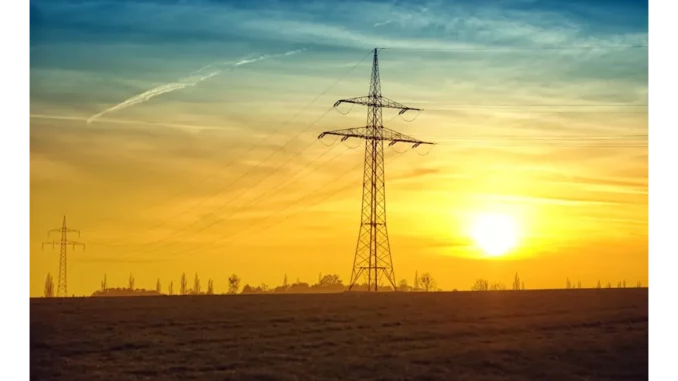
The approval of a substantial £2 billion funding package by Ofgem for the Eastern Green Link 1 (EGL1) project is a pivotal step in the United Kingdom’s quest for a sustainable energy future. This ambitious venture entails the construction of a 196-kilometre high-voltage direct current (HVDC) cable designed to interconnect Scotland and England. A significant portion of this cable will be laid beneath the North Sea, a testament to the engineering prowess required for such an endeavour. As the UK intensifies its efforts to meet clean energy targets, EGL1 is set to play a transformative role in the nation’s energy landscape, underscoring its strategic importance in reaching the Government’s Clean Power 2030 ambition.
Air quality is vital in planning. See how Focus360 Energy can assist.
The EGL1 project is poised to establish a 2-gigawatt electrical superhighway linking Torness in East Lothian, Scotland, with Hawthorn Pit in County Durham, England. This cutting-edge infrastructure is tailored to transport renewable energy, predominantly harnessed from offshore wind farms, to power approximately two million homes across the UK. The strategic significance of EGL1 is further highlighted by its designation as a key component by the National Energy System Operator (NESO), aligning seamlessly with national objectives for a cleaner energy future.
From an economic perspective, the implications of the EGL1 initiative are profound. Research conducted by the National Grid projects that the transition to a net-zero energy workforce could generate around 400,000 job opportunities by 2050, with an estimated 150,000 jobs expected to emerge in Scotland and the North of England. This project promises not only to invigorate local economies but also to contribute to broader national employment ambitions. Its impact is not just economic but also environmental, as EGL1 plays a crucial role in reducing the UK’s carbon footprint. By enabling the efficient transmission of renewable energy, the project reduces reliance on fossil fuels and curtails greenhouse gas emissions, resonating with the UK’s commitment to achieving net-zero carbon emissions by 2050 and supporting global efforts to combat climate change.
Ofgem’s fast-track process has been instrumental in accelerating funding approval for EGL1, offering developers initial upfront funding to secure supply chain commitments and access essential materials. This approach is designed to hasten project delivery, yet it is accompanied by stringent safeguards. Beatrice Filkin, Ofgem’s director of major projects, stresses that this streamlined process is not a carte blanche for developers. Measures are in place to ensure maximum efficiency and benefits for customers, with provisions allowing Ofgem to intervene when necessary. This balance between speed and oversight ensures that the project remains accountable and aligned with public interest.
The construction of the EGL1 cable is scheduled to commence in 2025, with the connection set to be operational by 2029. As the second of 26 critical energy projects under Ofgem’s Accelerated Strategic Transmission Investment (ASTI) framework, EGL1 exemplifies the framework’s efficacy in curtailing grid connection times for new offshore clean energy projects by up to two years. This expedited timeline is crucial as the UK continues its transition towards a cleaner energy paradigm. The EGL1 initiative is not an isolated effort but part of a larger £20 billion investment earmarked for critical energy projects, which collectively aim to bolster the nation’s clean energy infrastructure.
Thus, the EGL1 subsea cable project stands as a testament to the UK’s unwavering commitment to clean energy and its resolve to construct a sustainable future. By leveraging renewable energy and investing in essential infrastructure, the UK is making decisive strides towards its clean energy objectives, ensuring a brighter and greener future for generations to come. The successful implementation of EGL1 will not only enhance energy security and sustainability but also serve as a blueprint for future projects, demonstrating the potential of strategic investment and innovation in shaping a resilient energy landscape.


Be the first to comment